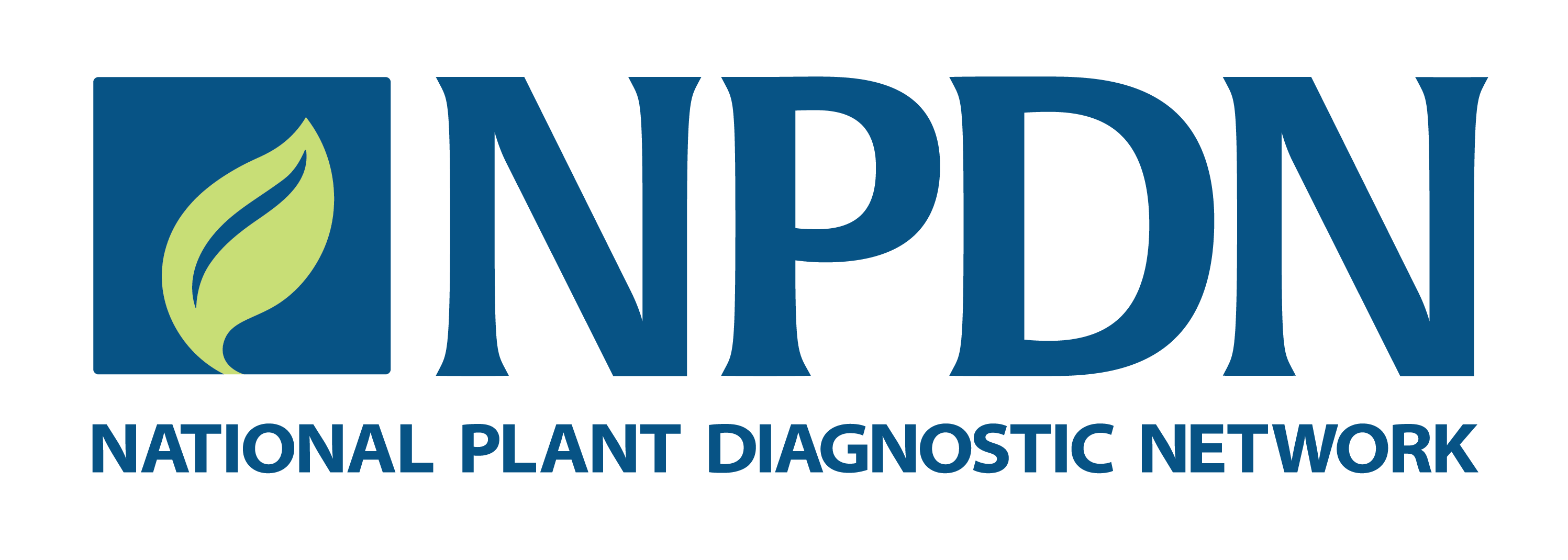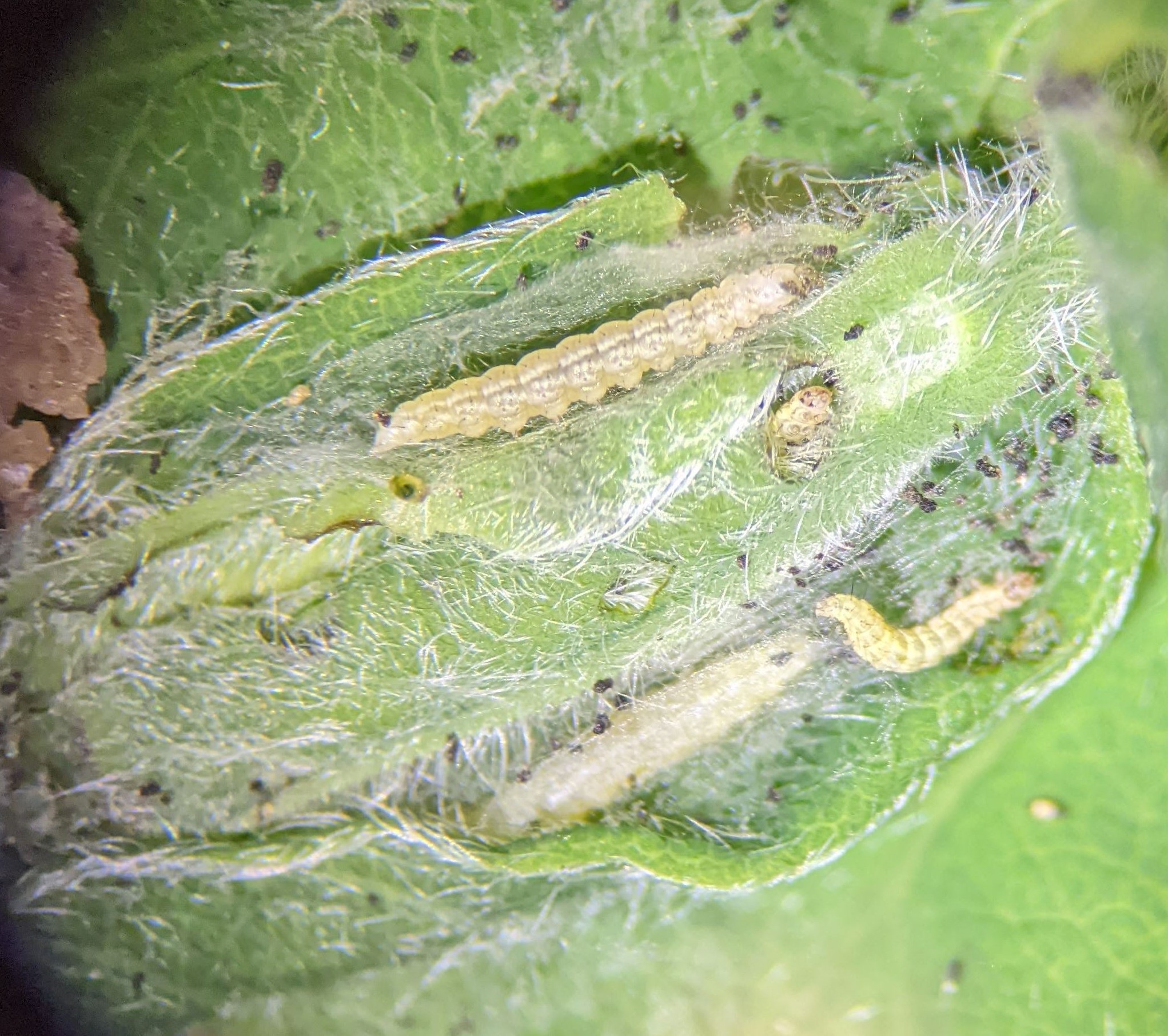By Alexandria ‘Alex’ Wenninger - University of Alaska Fairbanks, Institute of Agriculture, Natural Resources, and Extension, Integrated Pest Management Program (WPDN)
The Communicator: Volume 5, Issue 9, September 2024

Late-instar honeysuckle moth caterpillar on haskap shoot.
Haskap (aka “honeyberry”, Lonicera caerulea) is a cold-hardy shrub with edible berries that is becoming an increasingly popular addition to orchards and home gardens in Alaska. Beginning in spring of 2022, several growers in the Anchorage and Matanuska-Susitna Valley areas reported heavy defoliation of their haskaps’ emerging shoot tips to the University of Alaska Fairbanks Integrated Pest Management Program (AK IPM). Early-instar caterpillars were found feeding within developing leaf shoots; they produce silk which keeps the developing leaves loosely clasped together into a retreat, protecting the feeding caterpillars.
Early-instar honeysuckle moth caterpillars feeding inside a silk-tied haskap shoot.
Without much to go on from the literature, we collected caterpillars and host material from which we were successfully able to rear out adult moths. The adult moths were morphologically identified as the honeysuckle moth (Ypsolopha dentella) which is known to feed on a variety of plants in the honeysuckle genus (Lonicera sp.). Southcentral Alaska does not have any native Lonicera sp. indicating that this is an introduced insect. We also tracked the timing of the caterpillar development on haskap which helped inform our recommendations for monitoring and management of the caterpillars.
You can read the full story about the honeysuckle moth here:
Web version: http://www.akentsoc.org/doc/AKES_newsletter_2024_n1_a07.html
PDF version: http://www.akentsoc.org/doc/AKES_newsletter_2024_n1_a07.pdf
Recently, funds from the WPDN allowed us to purchase equipment which has increased our DNA-extraction capabilities, facilitating our ability to make DNA-based identifications. We tested DNA from the haskap caterpillars which not only corroborated the morphology-based identification in this case but also has contributed to the identification of other emerging pests found in Alaska.


